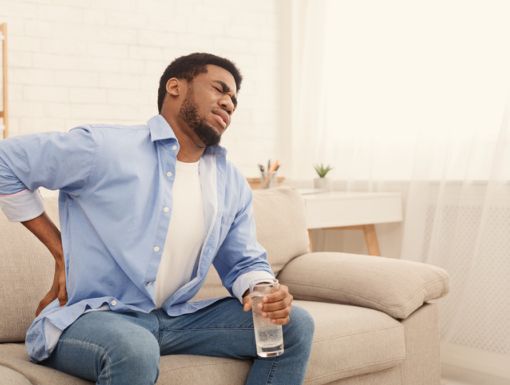
Lower Back and Neck Pain: What’s Causing It and How to Find Relief
What causes lower back and neck pain?
Dealing with back and neck pain can feel overwhelming, especially when it becomes a daily struggle. Did you know that nearly 85% of Americans experience lower back pain, while up to 20% live with neck pain? These conditions can take a toll not only on your physical health but also on your mental well-being.
Your spine is an incredible structure of muscles, tendons, ligaments, bones, joints, discs, and nerves. Together, they support your body and allow for flexible movement. When these tissues become strained or spasm, it often leads to stiffness and pain in the lower back or neck.
Here are some common causes of spinal pain:
- Muscle strain from overexertion or improper posture
- Tendon or ligament issues that affect movement
- Bone and joint problems, such as arthritis or inflammation
- Disc herniation or degeneration, often triggered by aging or injury
- Nerve irritation that can lead to numbness or shooting pain in other parts of the body
Spinal discs, which sit between your vertebrae, are especially prone to wear and tear. Conditions like herniated discs or degenerative disc disease can press on nerves, causing symptoms like muscle weakness, numbness, or pain in your arms or legs. These issues not only affect your physical mobility but can also disrupt your daily life.
What are the best treatments for back and neck pain?
If you’re struggling with neck or lower back pain, the good news is that many treatments are available. Most mild to moderate pain resolves with care within four to six weeks. Here are some standard treatment options to consider:
1. Medications
Depending on the source of your pain, doctors might recommend:
- Anti-inflammatory drugs to reduce swelling
- Muscle relaxants to ease spasms
- Oral steroids for short-term symptom relief
2. Physical therapy
A professional physical therapist can show you specific exercises to improve spine health and relieve joint and back pain. Targeted stretches and strength training help support the muscles around the spine, reducing strain and promoting healing.
3. Nerve blocks and steroid injections
For certain conditions, an injection of steroids or a nerve block can provide immediate relief. These treatments can reduce inflammation and may also help pinpoint the exact source of your pain.
4. Alternative therapies
Techniques like chiropractic care, acupuncture, or even gentle exercise programs like swimming, yoga, and Pilates have improved back pain relief. These therapies focus on reducing stress on the spine, improving flexibility, and encouraging healthy movement.
How does your posture affect spine health?
Think about how you sit during an average workday. Are you slouched over your desk or craning your neck to see your computer screen? Poor posture is a major contributor to spine health problems, but improving your habits can make a big difference.
Here are some practical tips for better posture:
- Lift your screen: Ensure your monitor is 2–3 inches above eye level to reduce neck strain.
- Position your mouse: Keep your computer mouse close to prevent overreaching or twisting your shoulder.
- Sit correctly: Keep your feet flat on the ground, shoulder-width apart, and your knees at a 90-degree angle.
- Move often: Set a timer to remind yourself to stand up, stretch, or take a short walk every hour.
Small changes like these can go a long way in preventing long-term damage to your spine and reducing joint pain.
When is surgery needed for spine health?
Sometimes, conservative treatments aren’t enough to relieve back or neck pain, and surgery becomes an option. At Ochsner, we use advanced, minimally invasive spine surgery to ensure effective results while helping patients recover faster.
Minimally invasive spine surgery comes with several advantages:
- Smaller incisions for better cosmetic outcomes
- Less blood loss during surgery
- Reduced damage to muscles, preserving their function
- Lower risk of infection
- Faster recovery times compared to traditional open surgery
Our surgeons use advanced tools like CT scans, navigation systems, and robotics to perform precise and safe procedures. Protecting the ligaments helps keep the spine stable and lowers the chances of needing more treatments later.
Which conditions can be treated with minimally invasive procedures?
Minimally invasive techniques to treat a wide range of spine disorders, including:
- Lumbar disc herniation
- Lumbar spinal stenosis
- Degenerative scoliosis
- Cervical foraminal stenosis
- Spinal tumors or infections
- Vertebral compression fractures
- Spinal instability or spondylolisthesis
These procedures include microdiscectomy, spinal decompression, tumor removal, and lumbar fusion to support the spine. They help reduce back pain, strengthen the spine, and improve quality of life.
How can I support my spine health daily?
A healthy spine requires more than occasional treatment; it thrives on daily care and mindful habits. Try incorporating these strategies to maintain a strong and pain-free back:
- Regular exercise helps strengthen the muscles that support your spine. Activities like swimming, walking, or yoga can be particularly beneficial.
- Good nutrition supports joint and spine health. Foods rich in calcium, omega-3 fatty acids, and vitamin D can promote bone strength and reduce joint pain.
- Carrying extra weight, especially around your abdomen, can increase the strain on your spine.
- Smoking reduces blood flow to the spinal tissues, making it harder for them to heal from injuries.
- A supportive mattress and proper sleep position can reduce stress on your back and neck.
Living with back or neck pain doesn’t have to be a permanent struggle. Understanding your condition and taking steps can improve your spine health and enjoy a better quality of life. Start by focusing on small changes, like improving your posture and staying active, and consider professional treatments if needed.


